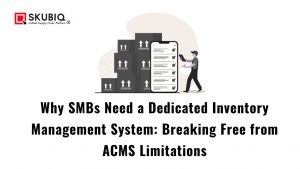Supply chain management might sound like something only big corporations worry about, but it’s closer to our daily lives than we think. Ever wondered how your favorite products make their way to the store shelf or your doorstep? It’s all thanks to a well-oiled supply chain. Now, imagine if this chain had superpowers to predict, optimize, and streamline every step. That’s what supply chain management analytics does! Let’s dive into why this is so crucial.
Ever thought about how the products you use every day make their journey from a factory to your home? It’s not magic, but it sure feels like it sometimes. The secret behind this seamless process is something called gestão da cadeia de abastecimento analytics. In a world where efficiency is king, understanding and improving the supply chain can make a massive difference. Let’s explore why this matters so much and how it works behind the scenes.
What is Supply Chain Management Analytics?
Supply chain management analytics is like having a crystal ball that helps businesses predict and enhance their entire supply chain process. It involves collecting and analyzing data from every step in the supply chain, from production to delivery. This data helps companies make informed decisions, reduce costs, and improve overall efficiency.
Imagine running a marathon without any knowledge of the route or your own stamina. Tough, right? That’s how managing a supply chain without analytics feels. With analytics, businesses can anticipate problems before they arise and streamline their operations to perfection.
The Importance of Supply Chain Metrics
Supply chain metrics are the heartbeat of supply chain management. They provide measurable indicators that help businesses understand how well their supply chain is performing. Metrics like order accuracy, delivery time, and inventory turnover are crucial. These numbers are more than just statistics; they tell a story about the efficiency and reliability of a company’s supply chain.
For example, if a company notices that its delivery times are consistently lagging, it can dive into the data to uncover the root cause. Maybe there’s a bottleneck in the warehouse, or perhaps the transportation method needs revisiting. Without these metrics, these issues might go unnoticed until they become major problems.
Boosting Efficiency with Capacity Utilization
Capacity utilization is about making the best use of available resources. Think of it as maximizing the potential of every piece of equipment, every worker, and every square foot of warehouse space. When companies optimize their capacity utilization, they can produce more with less, reduce waste, and save money.
Imagine a busy kitchen during dinner service. If the chef doesn’t use every burner, oven, and countertop efficiently, orders get delayed, and customers become unhappy. The same principle applies to supply chains. Efficient capacity utilization ensures that every part of the supply chain operates at its best, leading to faster production times and happier customers.
Enhancing Operations with a Warehouse Management System
A warehouse management system (WMS) is like the brain of a warehouse. It tracks inventory, manages orders, and even optimizes storage. With a good WMS, companies can reduce errors, speed up atendimento de pedidos, and improve overall warehouse efficiency.
Think of a WMS as a conductor in an orchestra, ensuring that every instrument plays in harmony. Without a conductor, the music would be chaotic and disorganized. Similarly, without a WMS, warehouses can become inefficient and prone to mistakes. By implementing a WMS, companies can ensure that their warehouses run smoothly and efficiently.
Achieving Supply Chain Optimization
Supply chain optimization is about making the entire supply chain as efficient and effective as possible. It involves analyzing data, identifying inefficiencies, and implementing solutions. The goal is to create a seamless process that minimizes costs and maximizes productivity.
Imagine a relay race where each runner must pass the baton smoothly for the team to win. If one runner stumbles or drops the baton, it affects the entire team’s performance. Supply chain optimization ensures that every part of the supply chain works together flawlessly, just like a well-coordinated relay team.
Measuring Supply Chain Performance
Supply chain performance measurement involves evaluating how well the supply chain meets its goals. Key performance indicators (KPIs) like on-time delivery rates, inventory accuracy, and order fulfillment rates are used to gauge performance. Regularly measuring these KPIs helps companies identify areas for improvement and track progress over time.
Consider it like checking the pulse of your supply chain. Regular monitoring ensures that everything is functioning correctly and allows for quick adjustments if something goes wrong. This continuous improvement cycle is essential for maintaining a high-performing supply chain.
Real-world Examples of Supply Chain Analytics
Many companies have already embraced supply chain analytics with impressive results. For instance, Amazon uses advanced analytics to manage its vast network of warehouses and delivery routes. This allows them to offer rapid delivery times and maintain high customer satisfaction.
Another example is Procter & Gamble, which uses analytics to optimize its production schedules and inventory levels. By predicting demand more accurately, they can reduce excess inventory and minimize costs.
Challenges in Implementing Supply Chain Analytics
Despite its benefits, implementing supply chain analytics isn’t without challenges. One major hurdle is data quality. Inaccurate or incomplete data can lead to poor decision-making. Additionally, integrating analytics into existing systems can be complex and require significant investment.
There’s also the human factor. Employees need to be trained to understand and use analytics tools effectively. Without proper training, the full potential of supply chain analytics might not be realized.
Future Trends in Supply Chain Management Analytics
The future of supply chain management analytics looks promising, with several exciting trends on the horizon. Artificial intelligence (AI) and machine learning are set to revolutionize the field by providing even more accurate predictions and deeper insights. Additionally, the Internet of Things (IoT) will enable real-time tracking and monitoring of every aspect of the supply chain.
Blockchain technology is another trend to watch. It offers a secure and transparent way to track transactions, which can enhance trust and efficiency in the supply chain. These advancements will continue to push the boundaries of what’s possible with supply chain analytics.
Conclusão
Supply chain management analytics is like the secret sauce that makes everything work better. By leveraging data and advanced analytics, companies can enhance their efficiency, reduce costs, and improve customer satisfaction. From the importance of supply chain metrics to the role of warehouse management systems, every aspect of supply chain analytics contributes to creating a smoother, more efficient supply chain.
As we look to the future, the possibilities are endless. With advancements in AI, IoT, and blockchain, supply chain management analytics will continue to evolve, offering even more powerful tools to optimize supply chains. Embracing these technologies will be key for companies aiming to stay competitive in an increasingly complex and fast-paced world.
FAQs (Frequently Asked Questions)
1. What are supply chain management analytics?
Supply chain management analytics involves collecting and analyzing data from various stages of the supply chain to improve decision-making, efficiency, and overall performance.
2. Why are supply chain metrics important?
Supply chain metrics provide measurable indicators that help businesses understand the performance of their supply chain. They highlight areas of strength and identify areas that need improvement.
3. How does capacity utilization boost supply chain efficiency?
Capacity utilization ensures that all resources are used to their maximum potential, reducing waste and increasing productivity. This leads to faster production times and lower costs.
4. What is a warehouse management system (WMS)?
A WMS is a software solution that helps manage and optimize warehouse operations, including inventory tracking, order fulfillment, and storage optimization.



